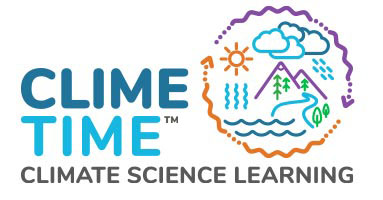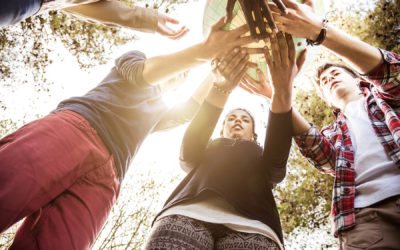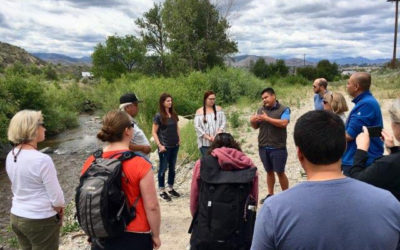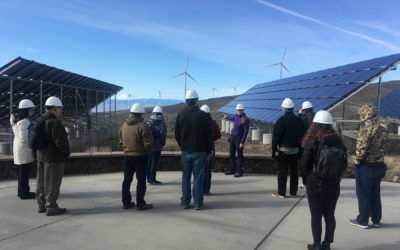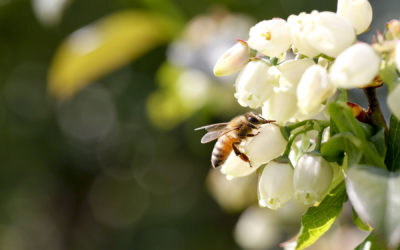Project Portraits
These Portraits were a collaborative effort between the ClimeTime partners and coordinating team members.

In order to best highlight the ClimeTime work, partners were asked to reflect on the successes and lessons learned in local and statewide projects. Partners shared stories of learning experienced by the teachers and students across Washington state. These Portraits of Practice represent the diversity of work done by ClimeTime and the many ways in which climate science and the focus on local phenomena-based learning can engage both teachers and students.
ClimeTime hopes that in sharing these Portraits, educators, students, and anyone invested in rigorous and experiential science learning will be inspired to explore how they can engage with climate science in their region. The Portraits of Practice offer an opportunity to reflect on the work conducted thus far, and use the stories to support the expanding work to deepen teacher and student understanding of climate science through the Next Generation Science Standards. ClimeTime values the work of Washington’s students, teachers, and community-based partners, and seeks to celebrate their commitment to engaging learning experiences.
Method
These Portraits were a collaborative effort between the ClimeTime partners and coordinating team members. In conversation with writers, partners brought to light narratives of work conducted by educators and climate science experts around the state, including the valuable and important knowledge of Indigenous communities. Writers compiled the stories shared and worked to represent what was done and what was learned in each Portrait. Each Portrait was reviewed by several people on the writing teams as well as edited and approved by the project partners. In some cases, the number of students was unknown. In such instances, a conservative multiplier of 20 students per teacher for elementary contexts and 100 students per teacher for secondary contexts was used to estimate students reached by the effort; at these times an “*” was placed beside the student number to indicate estimated calculation.
Use
Portraits can be used to help educators in your building, district or community envision what can be done to foster student learning in NGSS and/or climate change centered education. They can be discussed with decision makers at the school, district, or state level to illustrate what you wish to see in terms of educational innovation. More broadly, these Portraits might be disseminated with educational leaders and community-based organizations in other states to foster similar efforts in other contexts. Please widely share these Portraits of Practice so the work of our communities can be celebrated and uplifted.
Click on a portrait below to read more:
Systems are Everywhere!
The Systems Are Everywhere! Workshop was developed and led by the Institute for Systems Biology in collaboration with the Puget Sound ESD.
Climate Science through Chemistry
The rationale for this project is to support high school chemistry teachers for leading change.
Climate Justice League
The Climate Justice League is a cohort-based professional learning experience that supports secondary teachers in designing and implementing science learning activities that highlight social justice and environmental justice connections.
A co-designed Climate Science collaborative
The ClimeTime learning experiences for teachers supported by Braided Education Consulting was supported through the co-design of a culturally responsive curriculum unit focused on climate change phenomena to be used in schools serving students from the Confederated Colville Tribes.
Network design and support
Key insights from the leadership team efforts include: leveraging distributed expertise and responsibility, liaising across systems, cultivating a collaborative stance within a community of practice, and advocating for expanded and equitable access to professional learning for educators and science learning for students.
Covid-19 Adaptations to support the ClimeTime network
In response to the COVID-19 pandemic, the ClimeTime leadership team and partner organizations adapted the network and project activities in several ways.
Bringing climate science home with STEM Seminars from EarthGen
EarthGen (formerly Washington Green Schools) STEM Seminars provide hands-on, place-based professional development that equips teachers to engage their students in climate science learning.
Teaching the critical link between food waste and climate change
Since 2018, the Pacific Education Institute (PEI) has facilitated seven Solutions Oriented Learning Storylines (SOLS): Food Waste workshops statewide, serving 126 K-12 teachers from 31 school districts and providing 936 clock hours of professional learning.
STEM Storylines
The STEM Storylines are core K-5 instructional units developed over the past four years that support learning focused on bundles of NGSS and the Science and Engineering Practices. Each Storyline deeply integrates STEM learning with other subject areas such as ELA and math.
